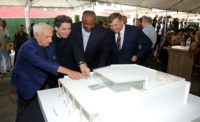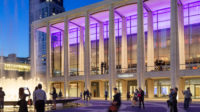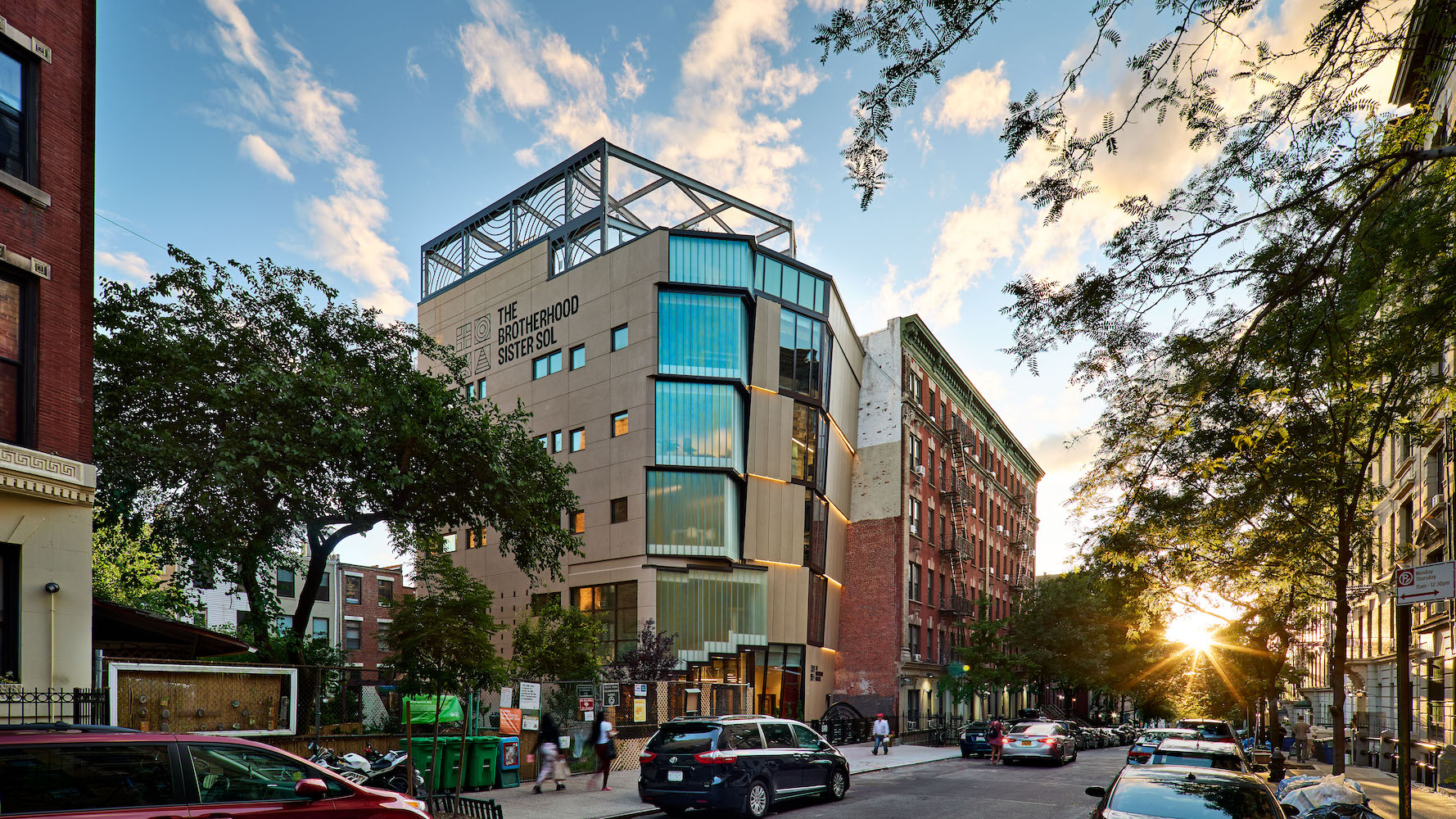Brotherhood Sister Sol's Mission of Transformative Support for At-Risk Youth Gets a New Home in Harlem

Designed by Urban Architectural Initiatives, the new headquarters of Black-led youth nonprofit BroSis is a striking new addition to northwestern Harlem's Hamilton Heights neighborhood. Photo by Chris Cooper

A shaded seated area provides a natural spot for congregation in the rear of the new facility. Photo by Chris Cooper

The Light Room, an airy gathering space with tiered seating is positioned above the main entrance. Photo by Chris Cooper

A series of balconies on the upper floors of the five-story building overlook the back terrace and neighboring community garden. Photo by Chris Cooper





Main entrance on West 143 Street. Photo by Chris Cooper
The fissured, faceted prow of The Brotherhood Sister Sol new headquarters ruptures the dour street wall of Harlem’s West 143rd Street. This pugnacious gesture matches the nonprofit’s outsize mission to comprehensively support low-income Black and Latino young people. Many of its participants, referred by New York City’s most underperforming schools, live with unstable housing and family life, and many would do poorly without the organization’s support.
BroSis, as it is also known, nurtures personal development and academic achievement over the course of secondary schooling (or longer, as needed, since it serves ages 8 to 22), “empowering critical thinkers and community leaders,” according to the organization. Many low-income communities are dotted with social service agencies, but BroSis avoids the usual piecemeal approach that makes it too easy for kids to fall through the cracks.
BroSis carries out this mission under its singular new roof. “In the late 19th century, settlement houses offered a wide range of services, health, and advocacy for a public that was largely white immigrants,” explains Khary Lazarre-White, a co-founder and current executive director. “Now we do wraparound support for Black and brown kids.”
Founded in 1995, the comprehensive approach to needs is akin to the whole-person approach embraced by numerous advocates to steer at-risk youth away from run-ins with the justice system. BroSis also reaches out to schools and other organizations that may benefit from its method. It organizes around the social justice issues that constrain life possibilities for the populations it serves.

The new building features flexible, natural light–flooded spaces for convening. Photo by Chris Cooper
The challenge for New York–based Urban Architectural Initiatives (UAI) was to accommodate the organization’s sprawling mandate in 17,000 square feet spread across a basement and five floors. Thus, the architects set the vertical circulation and restrooms of each 2,400-square-foot-average floor in a service band adjacent to the parti-wall side of the building, allowing the program space to open to daylight on three sides, one overlooking the Frank White Memorial Garden next door tended to by BroSis for NYC Parks.
The third floor houses an art studio, a media-arts computer classroom, and a mirrored, wood-floored space for yoga, dance, and martial arts. This diversity across very few square feet succinctly captures the left-brain, right-brain, mind-plus-body nature of the support BroSis offers. Most spaces in the building serve multiple needs. The lobby opens to a reception space that can accommodate meetings, orientations, and receptions. Bi-fold glass doors are thrown open to allow events to flow out to a planted rear terrace, which at other times becomes a place of quiet contemplation. A basement dining space serves 150 free meals a day to members. Staff in the large commercial kitchen were offering cooking lessons to young women on a recent visit.

A ground-level reception area leads to a spacious rear terrace. Photo by Chris Cooper
The distinctive stepped channel glass bay above the entrance lobby encloses the Light Room, which is washed by diffused illumination through the translucent glazing. Seating terraces scattered with African-patterned fabric cushions step down to an oversized square window that looks directly into the neighboring community garden. Tony Shitemi, a partner at the minority-owned UAI, had conceived the wedge like space for meditation, but it is used for a wide variety of purposes, accommodating three dozen youths or more, spilling over from an adjacent teen lounge.

The rear terrace and adjoining Frank White Memorial Garden. Photo by Chris Cooper
Using its multi-use spaces, BroSis staff can be found leading SAT prep courses, counseling LGBTQ+ youth on any given day, and helping participants navigate immigration and housing issues.
Though the $23 million project was supported by both city funds and private gifts, the budget demanded largely commercial-construction techniques and materials. But BroSis wanted to avoid the anonymity of standard products—and the look of secondhand castoffs that budget-constrained social-service nonprofits are often forced to live with. The arc of faceted spaces within the front facade that Shitemi likens to a protective embracing hand, offers unprogrammed space for a quiet moment gazing out the ample windows. The conventional suspended ceiling is cut away in places to reveal the fireproofed steel framing and the ductwork, which also increases the perceived height of the spaces.

Photo by Chris Cooper
Bricks and terra-cotta trim were salvaged from the brownstone (a one-time crack house renovated by UAI) that was demolished to make way for the new home of BroSis. The remnants were reused as an homage to the nonprofit’s history, said Dwayne Smith-Malcolm, a UAI architect. The small tiles that trim the columns and other surfaces were made by Zimbabwean craftspeople in South Africa.
Lazarre-White said the building has been transformative for BroSis and influential far beyond the neighborhood. He has recently hosted U.S. State Department officials and New York City school principals, who told him there was nothing like this anywhere in the city. Most important, he adds, “Our kids see the building as inspirational.”







